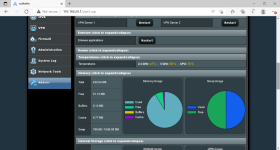What does it take to add an extra page / tab to the router web UI?
Like the Diversion tab on "LAN" or the dn-vnstat page on Addons (user1.asp and user2.asp).
Could anyone share a basic template?
E.g. add a page user3.asp that reads Hello world out of a file and hook it up somewhere?
I want to add a textbox that allows preview and editing of files in user-specified path.
Like the Diversion tab on "LAN" or the dn-vnstat page on Addons (user1.asp and user2.asp).
Could anyone share a basic template?
E.g. add a page user3.asp that reads Hello world out of a file and hook it up somewhere?
I want to add a textbox that allows preview and editing of files in user-specified path.




